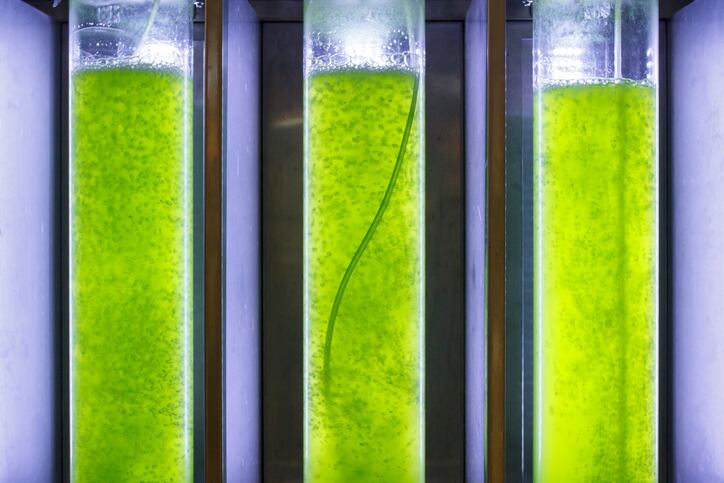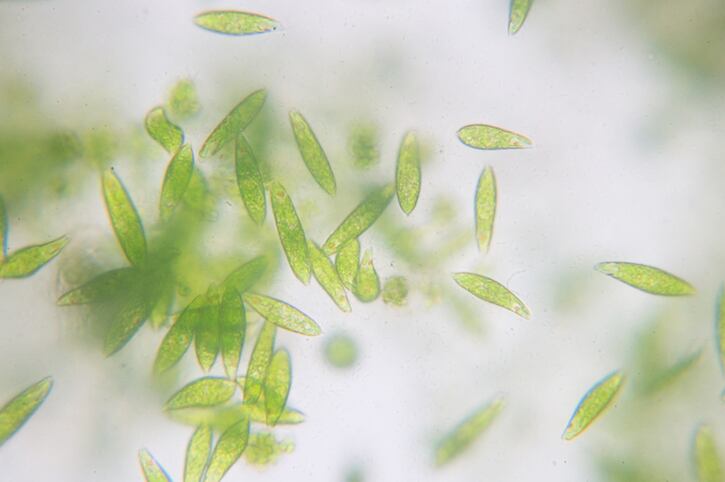Producing microalgae using photosynthesising bioreactors mimics the process seen in nature by growing on sunlight, water, CO2 and some nutrients. Produced in this way powders from strains like chlorella are rich in vitamins, minerals, carotenoids, protein, omega-3s and polyphenols.
Using fermentation to produce microalgae results in higher volumes and retained protein levels, but lower amounts of these phytochemical nutrients like carotenoids.
Allmicroalgae hopes that combining the two could offer the best of both worlds.
From 30 tonnes to... 100?
In December last year the company previously known as Allma moved under the umbrella of Allmicroalgae, which is owned by one of the biggest producers of cement in Portugal, Secil.
Allma was retained as the brand name for its existing closed pipe chlorella range as well as future products.
The business model make-over saw a renovation of its site near Lisbon to boost quality and output and offer fermentation technology to third parties as well as expanding to new strains like Nannochloropsis oceanica.
The company has now moved to scale-up production and Sofia Hoffmann de Mendonca, Allmicroalgae business development manager, told us it had a rough production target of 30 tonnes of chlorella for 2017.
If hopes for the combination of fermentation and photosynthesis pay off however, she said a long-term target could be as high as 100 tonnes a year, but the company preferred to be conservative.
For Nannochloropsis production, she said the company was still at testing stage, but it looked forward to an estimated 30 tonne annual capacity depending on market demand.
The company was looking to both food and feed customers, with the protein of the fermented varieties holding particular promise for the feed industry.
Microalgae has been held up as the answer to global protein and omega-3 sustainability concerns.
Yet many have said that before this can become a viable option, production must be scaled up dramatically.

Calls for scaled-up efforts
Discussing microalgae as both biofuel and food source, an editorial published in the official magazine of the Oceanography Society last week called for greater R&D investment to up production and reduce costs.
“Ramping up this production to a globally relevant scale will take additional decades to accomplish,” wrote the Cornell University researchers behind the paper.
“By the second half of the century, large-scale ICMM [industrial cultivation of marine microalgae] can help society achieve net-negative fossil carbon emissions; produce the liquid, energy-dense hydrocarbon fuels needed to power the heavy-vehicle, shipping, and aviation components of the transportation sector; and supply the necessary protein to feed an increasingly crowded world.”
Professor Charles Greene of earth and atmospheric sciences at Cornell University warned in an interview with his university the cost of inaction was “too steep to even contemplate”.
Hoffmann de Mendonca echoed this need for continued and increased work on new strains, which the firm was now investigating, as well as optimisation of production to bring volumes up and costs down.
Indeed the company’s interest in microalgae branches beyond food and feed.
Cement industry CO2
Next year it will begin a non-commercial research project into the use of CO2 produced by its cement company owner Secil as ‘food’ for microalgae.

Hoffmann de Mendonca said the product was “pure R&D” with no current commercial plans, but it could hold long-term implications for the production of microalgae in the bio-pesticide, biochemical and biofuel industries.
“We are still very far off from it, but if you don’t work on this application you will never get there,” she said.
Allmicroalgae is not the only company investigating uses of waste from other industries in microalgae production.
In October food ingredient giant Cargill announced it had partnered with a French start-up to turn waste water and CO2 from one of its malt production plants into spirulina production ‘fuel’.
Cargill calculates the pilot project could help it cut the plant's CO2 emissions by 5% and make use of 10% of otherwise wasted water.
The start-up, Algae Natural Food, hopes to produce 50-80 g of spirulina each day from the closed-system cultivation.
Allmicroalgae does not currently use waste water or CO2 in its production, but Hoffmann de Mendonca said this could be an option for the future.
